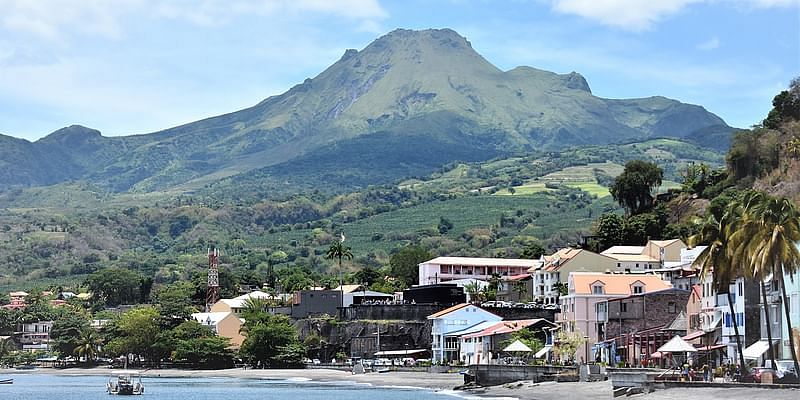On May 8, 1902, a catastrophic volcanic eruption occurred on the island of Martinique in the Lesser Antilles. Mount Pelee, an active stratovolcano, unleashed a massive eruption that completely destroyed the city of Saint-Pierre, claiming the lives of over 30,000 people and leaving only a handful of survivors. This deadly event remains one of the most devastating volcanic eruptions in recorded history and serves as a stark reminder of the immense power of nature.
Mount Pelee had been showing signs of unrest in the months leading up to the eruption, with minor earthquakes and steam venting from its summit. Despite these warnings, the residents of Saint-Pierre, the largest city on Martinique at the time, were largely unaware of the imminent danger. The city, often referred to as the “Paris of the West Indies,” was a vibrant cultural and economic hub, with a population of around 30,000.
On the morning of May 8, the situation escalated rapidly. A massive explosion rocked the volcano, sending a deadly pyroclastic flow hurtling down its slopes at speeds of over 100 miles per hour. Pyroclastic flows are fast-moving currents of hot gas, ash, and volcanic debris that can reach temperatures of up to 1,000 degrees Celsius. The searing cloud engulfed the city of Saint-Pierre in a matter of minutes, incinerating everything in its path and killing nearly the entire population.
The few survivors of the disaster included a prisoner named Ludger Sylbaris, who was protected by the thick walls of his underground cell. His harrowing account of the event provided valuable insights into the horrors of the eruption. Another survivor, Léon Compère-Léandre, was at his home on the outskirts of the city when the pyroclastic flow struck. He suffered severe burns but managed to escape the city and find help.
The Mount Pelee eruption left a lasting impact on the island of Martinique and the world. The city of Saint-Pierre was never fully rebuilt, and the capital of the island was moved to Fort-de-France. The disaster also led to significant advancements in the field of volcanology, as scientists sought to better understand the warning signs of volcanic eruptions and develop strategies for mitigating their impacts on human populations.
Today, the ruins of Saint-Pierre serve as a haunting reminder of the power of nature and the tragedy that unfolded on that fateful day in 1902. The site has been preserved as a historical monument and is a popular tourist destination, offering a glimpse into the city’s tragic past and the devastating force of the Mount Pelee eruption. As we remember the events of May 8, 1902, we must not forget the lessons learned from this catastrophe and the importance of continued research and preparedness in the face of nature’s most destructive forces.










![Read more about the article [Funding alert] Square Yards raises $25M from Hong Kong-based ADM Capital](https://blog.digitalsevaa.com/wp-content/uploads/2021/07/SquareYards-1626413266535-300x150.png)